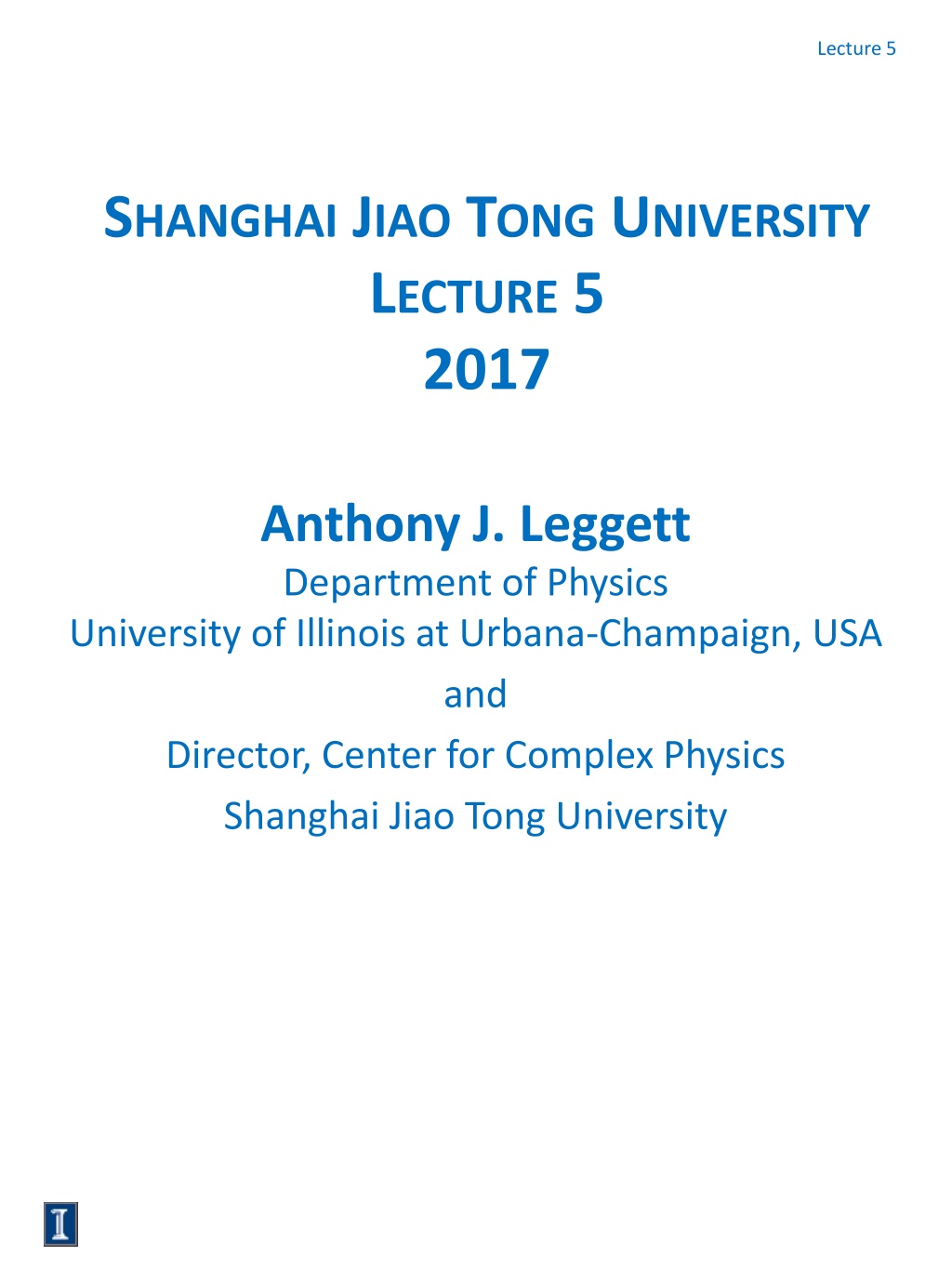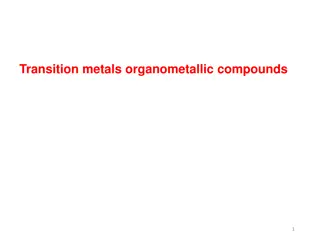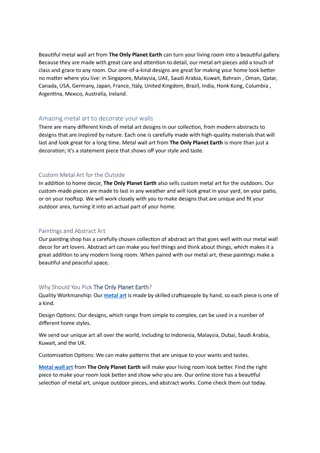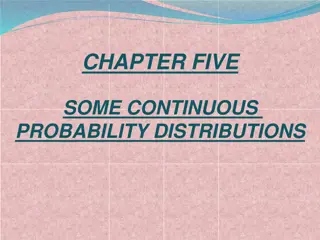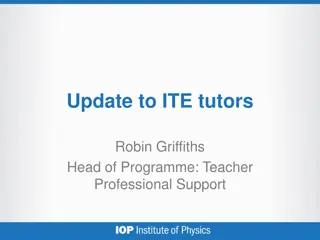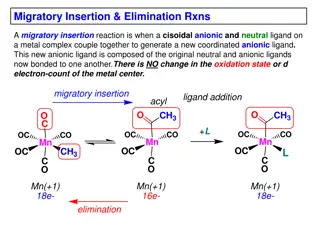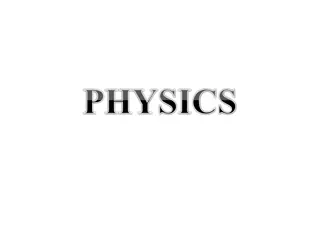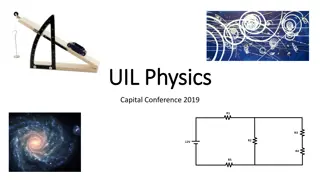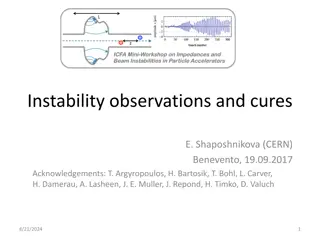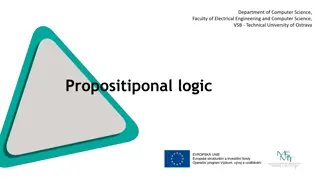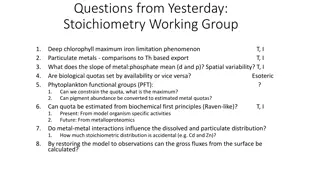Instability of the Normal State in Metal Physics
Lecture 5 at Shanghai Jiao Tong University discusses the simplest quantum model of metal, Fermi distribution, DOS near Fermi surface, Bloch model corrections, and Landau-Silin model interactions in metal physics.
Download Presentation

Please find below an Image/Link to download the presentation.
The content on the website is provided AS IS for your information and personal use only. It may not be sold, licensed, or shared on other websites without obtaining consent from the author.If you encounter any issues during the download, it is possible that the publisher has removed the file from their server.
You are allowed to download the files provided on this website for personal or commercial use, subject to the condition that they are used lawfully. All files are the property of their respective owners.
The content on the website is provided AS IS for your information and personal use only. It may not be sold, licensed, or shared on other websites without obtaining consent from the author.
E N D
Presentation Transcript
Lecture 5 SHANGHAI JIAO TONG UNIVERSITY LECTURE 5 2017 Anthony J. Leggett Department of Physics University of Illinois at Urbana-Champaign, USA and Director, Center for Complex Physics Shanghai Jiao Tong University
SJTU 5.1 Instability of the normal state Simplest QMmodel of metal: Sommerfeld model. electrons with spin (so 2 spin states , ) moving freely in volume V ?3. Apply periodic boundary conditions, then energy eigenstates are 1 ?exp(?? ?) with ??= 2???/? (etc.) ??? = and energy ??= 2?2/2? so density of states (of both spins) is 2?3/2 2?3 3?1/2?? 2? 2?3?3? = 2? 2?34??2?? = ? ?? = ?? ? ?? Electrons are fermions, so obey Pauli principle (crucial!) at ? = 0, electrons occupy lowest-energy states, that is a sphere in ?-space with radius ?? such that 2 2?3 i.e. ??= 3?2?1/3 4? 3?? 3= ? ? Fermi wave vector, typically ~1 1 Corresponding energy is 2 ??= 2?? Fermi energy, typically ~1 10 ?? ~104 105? 2?
SJTU 5.2 For ? nonzero, electrons have Fermi distribution ??= exp? ?? ? + 1 1 1 ??? chemical potential. ?? Crucial point: at all ? below melting, ?? ?? properties of metals overwhelmingly determined by states near Fermi energy ? = 0 ?? ? 0 ?? ?? ???
SJTU 5.3 Particularly important quantity: DOS per unit energy per unit volume for states near Fermi surface, 3 2 2? 2?2 3?? 1 2= ?? ?? ? ?? = 3? 2?? In terms of this, electronic specific heat ??=?2 2??? (so ~???/?? times classical value 3?? ?? 3 2???) 2?? ?? (~???/?? times classical value ??? Pauli spin susceptibility ??= ?? 2/???) To discuss transport properties in Sommerfeld model, introduce phenomenological scattering time ? /?? ??/? Fermi velocity (typically ~3x106?/???~0.01?) mean free path
SJTU 5.4 Some important corrections to Sommerfeld model: 1. Crystal periodicity Bloch Model: Electrons still non-interacting, but move in periodic potential of ?; main consequences: (a) band structure not all crystalline solids metallic (but at least those with odd number of electrons/unit cell should be) (b) within single band, ? ? 2?2/2? locus of ?? in general not spherical. However, can still define DOS at Fermi energy, ??/??, and formula for ?? and ?? in terms of it unchanged ??+ ? ?? ?
SJTU 5.5 2. Effect of (mostly short-range repulsive) interactions Landau-Silin model: low lying excitations now quasiparticles ( electron plus screening charge) with effective mass ? , interact via Weiss-type molecular fields. Neither Bloch nor Landau-Silin modifications change basic structure of BCS theory, so shall assume simple Sommerfield model plus weak attraction (see below). How to generate effective attraction between electrons in a metal? At first sight, have only interaction with static lattice (accounted for in Bloch picture) and Coulomb interaction, ?24??0?? ?? , ?? which is purely repulsive. However: (a) Effective Coulomb interaction is screened. To get qualitative feeling, consider response of electrons to charged impurity (ions form constant +v? background.)
SJTU 5.6 Quantitatively: effective potential at?is total charge enclosed 0 ????? = ????? + ????? ?2? +? - -. - due to induced electron cloud +?? - - -- - ?2????? = ???? ? ?0 induced ?? charge density ????? = ?0????? response induced in non-interacting gas (actually ~ ?? ??) Taking Fourier transforms and solving gives ?? ?? 1 ??0 ?2??? ????? = 2 1 + Thomas-Fermi wave vector, ?2?0?0 ~1 2 1 1 2 i.e. ????? ??2 exp ???? ? Intuitively, same should hold for effective interaction of two electrons however, interaction is still repulsive
SJTU 5.7 How to generate attraction .? (cont.) ? 1 2. Effect of ionic motion (phonons): +v? ions attracted to path of ? 1 ; but sluggish + slow to relax after passage of ? 1 + v? charge remains, can attract ? 2 . Thus, + + + + + + + ? 2 + ? 2 attracted to past position of ? 1 ! (note: works even if solid not crystalline!) Illustrative analogy: 2 particles 1, 2 coupled with strength ? to SHO of mass ? and natural frequency ??. Results in time-dependent effective interaction ???? whose Fourier transform is 12? simple harmonic oscillator 12? =?2 1 ???? 2 ?2 ?0 ? attraction for ? < ?0
SJTU 5.8 Putting considerations 1 and 2 together (and with lots of algebra!) we find that a plausible form of effective interaction of 2 electrons in metal is Frequency of phonon with wave vector ? 2 ?? ? 2 ?0 ?????,? = 1 + 2 1 + ?2/??? ?2 ?? ? Bardeen-Pines interaction Attractive for ? < ?? (?) : If this were exactly right, all metals should be superconductors! need more precise calculation taking into account details of band structure, etc. But, at end of day, plausible that for at least some metals the static ? 0 interaction can be attractive .
SJTU 5.9 . The Cooper problem ?? 2 electrons in singlet spin state, interacting via constant attractive potential V?? ? (V? either sign), but excluded from the Fermi sea (and also from high-energy states with E > ??+ ??). Suppose COM is at rest, then orbital wave function is ?? . excluded ?? . ?????1,?2 = ?????1 ?2 2= 1 with ??= ? ?, ?? = ??exp?? ?1 ?2 ? ? ?, relative coordinate Pauli normalization It is convenient to measure the kinetic energy ? from the value it would have if both electrons were exactly on the Fermi surface ? = ??. Thus, ?? 2?2 ? = 2 2???? 2? ?? , ?
SJTU 5.10 The potential energy is ? = V ? ? ? ?? 2?? = ?0? ? 2= ?0 ?? ?? Hence, minimizing ? + V subject to the normalization condition and measuring the energy ? from 2??, we find the ???? time-independent Schr dinger equation 2?? ? ??= V? ?? ? or rearranging and replacing 1 ?? ? ? , 2 ? ? ? ? ?? , ? (note no spin sum!) ???? V? 2? ? (*) ? ? = ? ? ? ? 2 0 Note that so far, the case of 2 electrons interacting in free space is a special case, with ?? set = 0. In that case (in 3D) the DOS ? ? ? 1/2, and for small enough V? equation (*) has no bound-state ? < 0 solution, giving the known result: in (3D) free space, an arbitrarily weak attractive potential does not give a bound state.
SJTU 5.11 Now the crunch: for the Cooper problem, ? ? needs to be given its value at the Fermi energy, i.e. the constant value ??/?? (note in free space this would be the case in 2D). Thus, taking this out of the integral. 1 ?? ??V0 ?? 2 2? ? ?? ? ? c ? = 0 or integrating both sides over ? and cancelling the factor ?? ? ? ?? , 2 ?? 1 = 1 ?? ?? ?? ?0 2? ? 0 0 We seek a solution with ? < 0. For V0 positive (repulsion) no such solution exists. But for V0 negative (attraction) 1 =1 ?? ?? 2?? ?+ 1 ? = V0 ? 2 1 2?? exp 4/?? ??V0 1 or in the limit V0 0, ?? ?? ? = 2??exp 4/ V0
SJTU 5.12 Thus, state is bound in sense that ? < 0. Is it also bound in the sense that ? ? 0 for ? ? Yes! ? ?? 1 ? ? ? cos?? 2??+ ???~ cos/sin ??? ? ? ? ? = const. ?? 1 ?2 at large ? (so ? where ? ? ~ normalizable). Crossover occurs at distance ?~??, where 1 ? at small ? , ~ ?? ??V0 ??~ v?/ ? ~ v?/??exp+4 so effective radius of pair for V0 0. What do we expect at nonzero ?? Crudely speaking, if we replace in ? ? ?? the lower limit 0 by a value ~ ??=0, solution disappears. But effect of nonzero ?is to blur sharp cutoff at ? = 0 by amount ~???. Hence expect solution disappears for ?~?? where ?? ?? ??~ ? /??~ ??/??exp 4 V0.
SJTU 5.13 Summary of lecture 5: A minimal model for superconductivity is the free- electron (Sommerfeld) model plus a weak attractive electron-electron interaction. The overall interaction can be attractive because (a) the bare Coulomb repulsion is strongly screened, and (b) virtual polarization of the ionic lattice (exchange of virtual phonons) can give rise to an interaction which is attractive at low frequencies. In the presence of a weak attractive contact interaction ??? ? , a pair of electrons excluded from the Fermi sea form a bound state with energy E~ 2????? 4/ ??/?? ?? and radius ~ ??/ ? . At nonzero ? the bound state disappears around ??~ ? /??.
